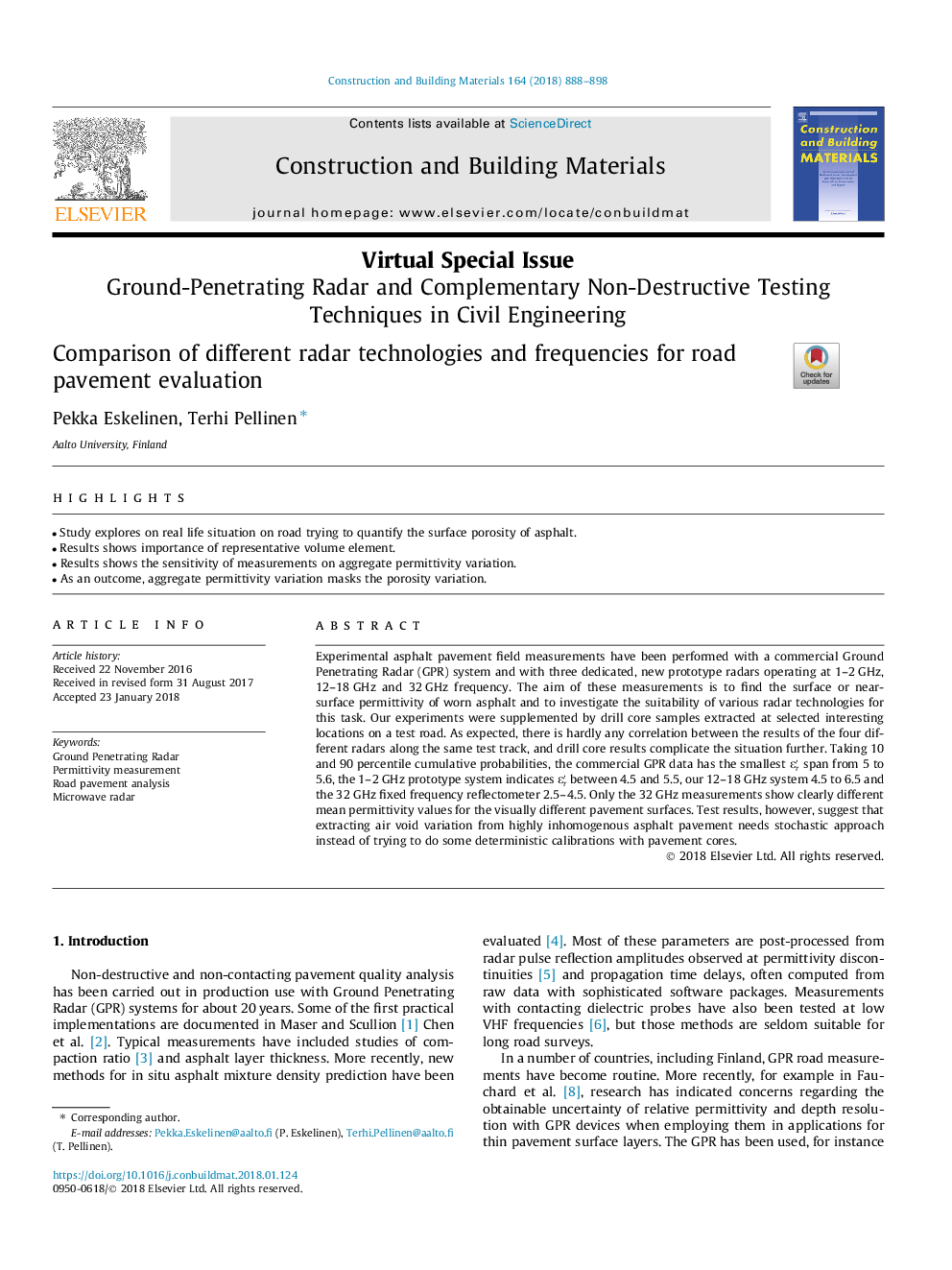| Article ID | Journal | Published Year | Pages | File Type |
|---|---|---|---|---|
| 6716169 | Construction and Building Materials | 2018 | 11 Pages |
Abstract
Experimental asphalt pavement field measurements have been performed with a commercial Ground Penetrating Radar (GPR) system and with three dedicated, new prototype radars operating at 1-2â¯GHz, 12-18â¯GHz and 32â¯GHz frequency. The aim of these measurements is to find the surface or near-surface permittivity of worn asphalt and to investigate the suitability of various radar technologies for this task. Our experiments were supplemented by drill core samples extracted at selected interesting locations on a test road. As expected, there is hardly any correlation between the results of the four different radars along the same test track, and drill core results complicate the situation further. Taking 10 and 90 percentile cumulative probabilities, the commercial GPR data has the smallest εrâ² span from 5 to 5.6, the 1-2â¯GHz prototype system indicates εrâ² between 4.5 and 5.5, our 12-18â¯GHz system 4.5 to 6.5 and the 32â¯GHz fixed frequency reflectometer 2.5-4.5. Only the 32â¯GHz measurements show clearly different mean permittivity values for the visually different pavement surfaces. Test results, however, suggest that extracting air void variation from highly inhomogenous asphalt pavement needs stochastic approach instead of trying to do some deterministic calibrations with pavement cores.
Related Topics
Physical Sciences and Engineering
Engineering
Civil and Structural Engineering
Authors
Pekka Eskelinen, Terhi Pellinen,
